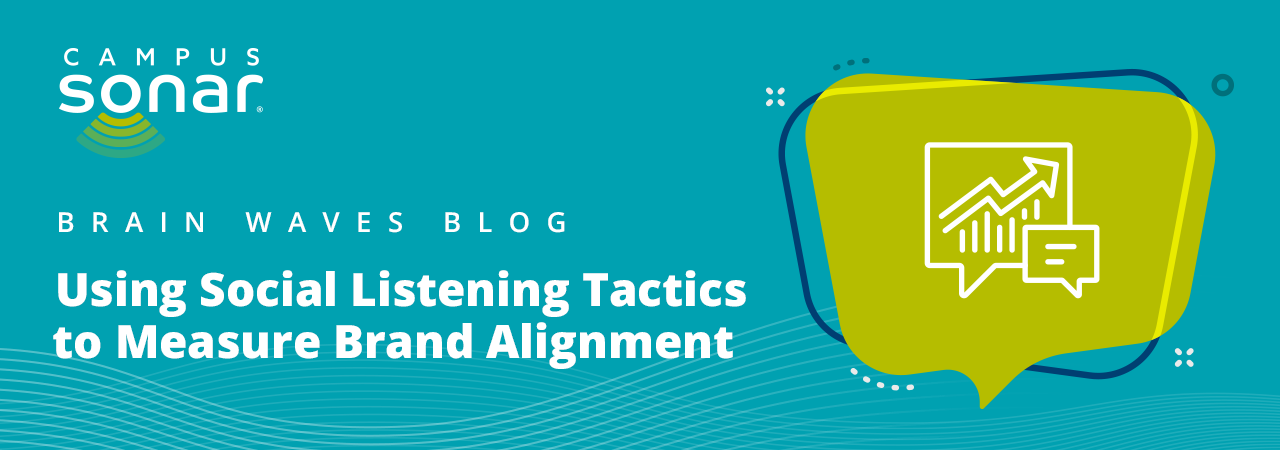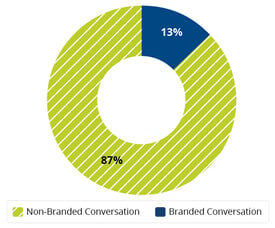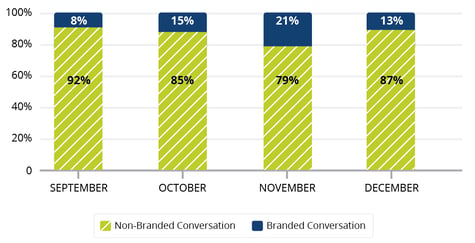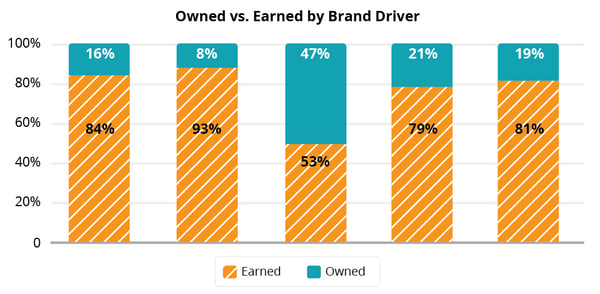Using Social Listening Tactics to Measure Brand Alignment

What is the goal of your content marketing? Whether you’re new to the content marketing game or a seasoned veteran, you probably answered this question by referencing themes such as attracting more qualified leads at a lower cost, as well as success metrics like organic web traffic, keyword rankings, cost-per-acquisition, time on page, etc.
To be clear, you wouldn’t be wrong in that answer. We’ve been asking friends and colleagues this question for years and these metrics and themes repeatedly rise to the surface of their answers.
What’s missing from this answer? Your brand, and specifically, the extent to which your content marketing aligns with and reinforces your institution’s brand pillars.
That may seem like a second-tier goal, but as competition within higher education ramps up for students, resources, and donors, building and reinforcing a distinguishable brand has become mission critical for institutions. That requires each marketing tactic to pull in the same direction, and your content marketing is no exception.
Measuring Brand Health
Part of the reason we rarely consider content marketing and brand together is the fact that branding, even today, remains … squishy. While many marketing tactics, including content marketing, have metrics for success, branding remains a fluid concept, often measured in qualitative and even anecdotal terms rather than quantitative measures.
That doesn’t mean it’s not possible. Campus Sonar recently took on the challenge of measuring brand health for one of our clients who recently adapted their brand strategy and defined five brand pillars. To measure their brand’s health and accuracy, we used social listening tools to determine how their owned and earned conversation aligned with their new institutional brand pillars.
Understanding Owned and Earned Conversation
What’s the difference between owned and earned conversation, and why is it important to measure them separately? Owned conversation is content that is published by an account or on a domain that your institution controls. Earned conversation, conversely, is conversation and content published by individuals and outlets that you don’t control. Measuring both owned and earned conversation, and the percentage of that content that aligns with your brand, can be an excellent signal of brand health. It not only measures how well you understand and reinforce your brand internally, but how much your audience understands your brand and perceives your institution.
Measuring Brand via Social Listening
To accomplish this task, the team at Campus Sonar used Boolean search queries to find all public conversation taking place about our client over a defined period of time. Then we built a taxonomy that identified how branded conversation might appear online and categorized mentions that aligned with one or more brand pillar. Finally, we conducted a manual review of conversation to ensure accuracy.
Through this analysis, we measured not only the percentage of online conversation that aligned with our client’s brand, but how that percentage changed over time.


But the real value from this research project came from understanding which brand pillars were most represented within branded conversation, and beyond that, which pillars were most represented in owned and earned conversation. Why? Understanding which brand pillars our client most often covered compared to those that most resonated with their audience enabled us to inform and adapt their content strategy moving forward, helping them shift their priorities accordingly.

For example, our report showed that our client contributed to 93 percent of the conversation taking place about their community-based brand pillar but only 53 percent of the conversation relating to their career-based brand pillar. By understanding the data, our client was able to confidently shift their content focus, placing a greater emphasis on telling stories related to career development, preparedness, and experiential education.
Your brand will never be as easy to measure as individual aspects of your marketing. But while understanding your brand health can be a tough task, understanding the extent to which your owned and earned conversation contributes to that brand health doesn’t have to be, and the results of that work have tangible benefits to your content marketing strategy.
 The post Using Social Listening Tactics to Measure Brand Alignment originally appeared on ContentEd's News & Insights.
The post Using Social Listening Tactics to Measure Brand Alignment originally appeared on ContentEd's News & Insights.
